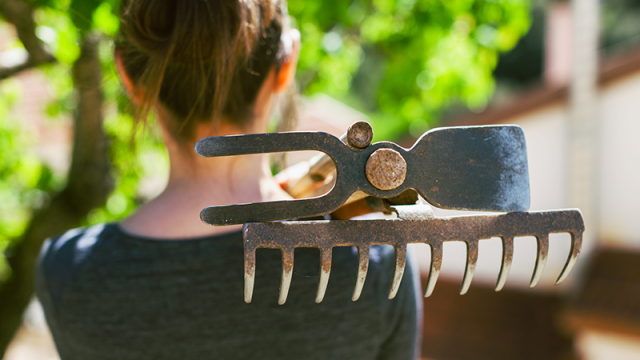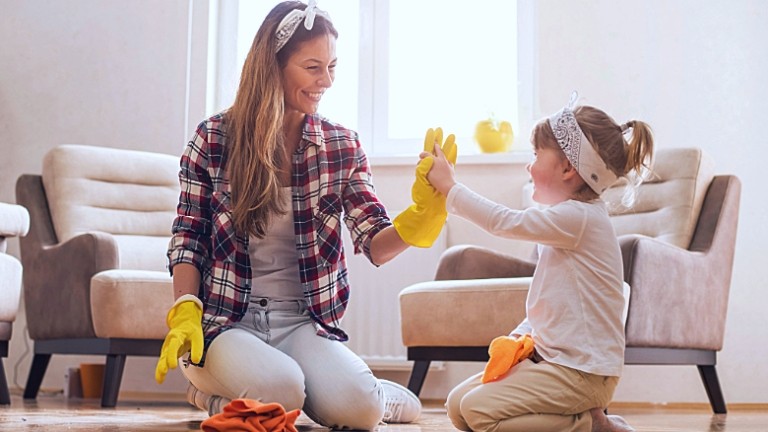Secure by design

A few years ago, my husband’s bike was stolen out of our garage; bicycle theft is not uncommon in college towns. We didn’t expect to get it back, but we called the police department anyway. A Police Officer from the Eugene Police Department came out to look around our property and file a report. The Officer wasn’t able to recover the bicycle, but he did give us advice that was much more valuable than the stolen bicycle.
The Officer showed us what our house looked like to a potential thief. The Officer pointed out our dark backyard that connects to a little-used alley, a dilapidated garage without a lock, a front entry with no pathway lighting and a front door without a deadbolt.
My husband and I began making changes right away. Some changes were easy fixes, such as a motion-activated light for the backyard, replacing the front door, a simple combination lock for the garage. Other improvements required a bit more investment, such as pathway lighting in the front and rebuilding the garage. Now, when we take on new home projects, crime prevention is one of the first elements we consider.
Crime Prevention Through Environmental Design (CPTED) suggests that the form and arrangements of buildings and of open spaces can either encourage or discourage crime. CPTED attempts to reduce crime and the fear of crime by reducing criminal opportunity and fostering positive social interaction among the users of a space.
The three elements of CPTED are Territoriality, Surveillance, and Access Control. Consider all three to prevent your home becoming a target for theft.
Territoriality
Territoriality means that a person’s property is clearly defined as their own through the use of visual cues such as fences, shrubs or other clear definition between property lines. “Make sure the home is maintained, looks lived in and does not appear to be vacant,” advises Stephanie Banner from Liberty Mutual Insurance. Keeping shrubs trimmed and your landscape tidy not only improves the appearance, but also improves the security.
Installing an alarm system is another clear way to protect your home. With a professionally installed alarm system that has both a sounder and transmits a signal to a UL Certified alarm monitoring station, another level of territory can be established. Don’t forget to place a sign in the yard or on the door that indicates the home is protected as this too can be enough to deter would-be thieves. Check with your home insurance company as they may offer a discount on your premiums for installing an alarm system.
Surveillance
When a criminal is casing a home for a future robbery, they look for a way to get inside without being seen. Make sure to be aware of lighting as a means to deter would-be thieves it can be an easy fix to improve indoor and outdoor lighting. Landscape lighting that illuminates pathways or plants is not only attractive, but can also deter a thief from being able to sneak up to a window unseen. Be sure all entrances to your home are lit with porch lights. Parking areas and back yards can be lit with motion-sensitive lighting to add protection without leaving the lights on constantly. Keep windows clear of all clutter, as well as trim and maintain all landscaping so that lines-of-sight are clearly visible.
Working together with neighbors to start a neighborhood watch program is an excellent way to increase the surveillance factor of your home. More eyes looking out for suspicious activity have a better chance of stopping a crime or catching criminals in the act.
Access Control
Limiting access to your property may help deter theft. Access Control means denying or restricting access to your property, which in turn will discourage thieves because of the increased risk of getting caught. For homes, access control is primarily achieved through locks and fences, but it may also make sense to reduce the number of entrances and exits to your home, and fence or rope off problem areas such as dark corners of the property or abandoned sheds or buildings.
Additionally, there are a couple of common-sense things that we can do every day. Make sure all windows and doors are securely locked. You’d be surprised how many times people forget this simple action. Now that you have those exterior lights, make sure to turn them on and replace the bulbs as soon as needed. Finally, make sure all valuables are out of eyesight and not easily seen through windows. You may want to invest in a fireproof safe for particularly valuable items. With a little investment you can keep your home a safe haven for you and your family.


